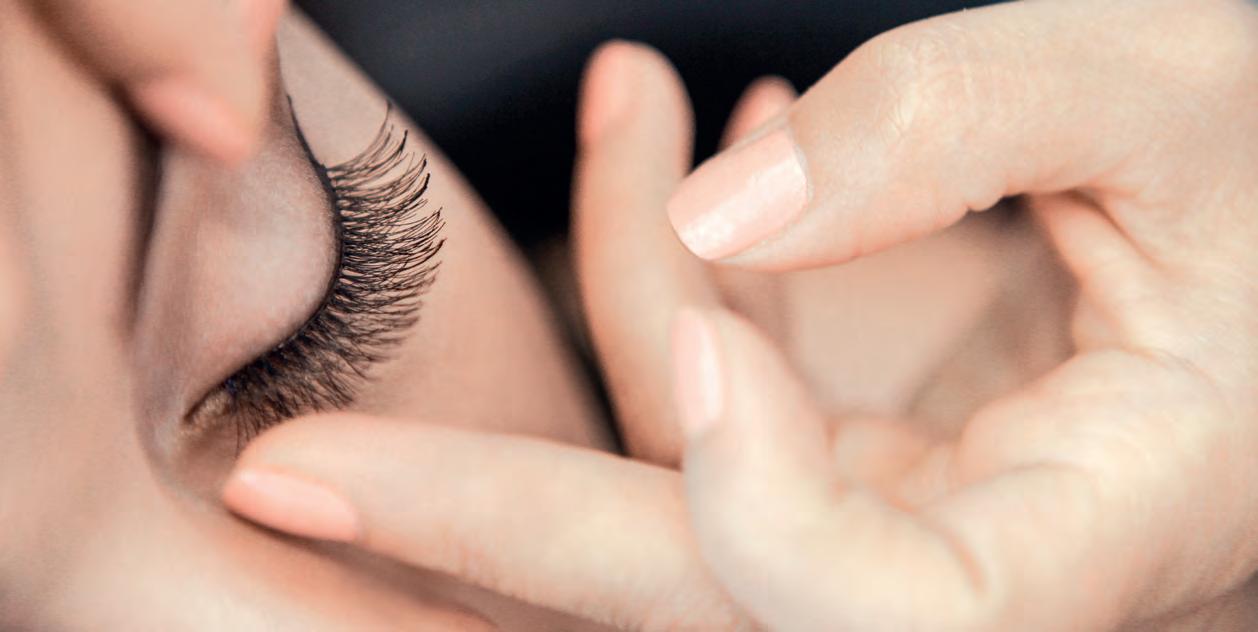
3 minute read
SORE AND SWOLLEN EYES AFTER FALSE EYELASH APPOINTMENT
by TheAOP
OT presents a clinical scenario to three of our resident IP optometrists. Here, a woman presents with a potential allergic reaction to false eyelashes ahead of her daughter’s wedding
The scenario:
Advertisement
A woman comes in with sore eyes, red and swollen eyelids, mild photophobia and watering. She had some false lashes put on at a beauty salon yesterday. Two hours later, her eyelids became hot, tingly and itchy. Her daughter’s wedding is tomorrow and she’s desperate for some help. What can you do?
OT’s panel says...
Kevin Wallace (KW): This is likely an allergic reaction to the adhesive used. The most important thing is to remove the allergen: in this case, the lashes and their adhesive.
Although it isn’t clear at the moment that this is actually an eye problem, it is clearly affecting the adnexa so is reasonable for an optometrist with appropriate experience to treat.
Once you remove the allergen, the usual treatment of regular lubrication and a cool compress will give her some relief and reduce the signs in most cases. The added wrinkle in this case is the fact that the patient has a wedding tomorrow and will be concerned about cosmesis.
I think it is unlikely her symptoms would resolve in time for the wedding with any treatment, but a short course of ‘non-penetrating steroid’ may improve the signs and symptoms. There is also a conversation to be had about whether she should wear any eye make-up tomorrow, as well as the risk of a short course of steroids and whether they are necessary.
Ankur Trivedi: I would ask whether she had had false lashes before, either with the same or no reaction, and whether patch testing was done prior to treatment, to rule out any chance of reaction. There is a likelihood that this is an allergic reaction to the lash glue, or to some other element that
OCCUPATION:
AOP clinical adviser
YEARS IP-QUALIFIED: 11 years
OCCUPATION:
Clinical multimedia editor
YEARS IP-QUALIFIED: Five years
OCCUPATION:
AOP IP Councillor
YEARS IP-QUALIFIED: Nine years was used for the treatment. The first thing would be to remove the lashes and glue to remove the allergen or trigger. Given the context, I imagine this would not be welcomed, so I would want to prescribe steroids – ideally non-penetrating, and available in a preservative-free version.
Ceri Smith-Jaynes (CSJ): This is a real case from practice. The patient had had the eyelash extension treatment before, with no adverse reaction.
Something in the glue has probably caused the reaction. It has been suggested that formaldehyde in lash extension glue can be emitted from the glue a few hours after application and can be volatile, depending on temperature and humidity. This is a potential cause of the reaction in the skin.
This patient is complaining of photophobia, so I’m going to need a good look at her cornea, with fluorescein, as there is likely to be keratoconjunctivitis too. The volatile compound can dissolve in the tear film and cause ocular surface damage. This patient had a small infiltrate on one cornea, along with bilateral inferior staining and bulbar and palpebral hyperaemia. There was a bit of yellowy discharge as well as glue residue on the lashes.
KW: It’s important to examine the rest of the eye – particularly using fluorescein to assess the cornea. I always check what the patient can see before we start too – clearly reduced acuity is an important sign in any eye problem and a pinhole is very useful to differentiate ametropia from a pathological reason.
CSJ: The most appropriate College Clinical Management Guideline to apply here is Conjunctivitis medicamentosa (also Dermatoconjunctivitis medicamentosa), described as “chemical irritation of ocular and/or adnexal tissues by a topically applied drug, contact lens care product or cosmetic, or by environmental or occupational substances.”
Treatment guidance includes withdrawal of the offending medication or preservative and cold compress (symptomatic relief). Eyelash glue requires an oil to dissolve, so you’ll need an oil-based cleanser, eye make-up remover, olive oil, or Vaseline. I’d try warm water first, though. The lids are sore and inflamed, so I’d get a cool gel pack on as soon as the lashes are off.
I’d advise copious ocular lubricants, which will be soothing if you refrigerate them. I’d prefer to go preservative-free for any treatment in this case – dexamethasone or prednisolone steroid drops are available in unit dose and will help with inflammation.
It’s important to measure visual acuity. I don’t think I want to hit this lady with Goldmann tonometry if she’s struggling to open her eyes, but I’ll check IOPs when she returns for follow-up. I’d like a baseline
IOP reading because of the steroid treatment. I don’t anticipate her needing the steroid for more than a week or so. I also considered the College guidance for chemical trauma. My first thought was allergy, but is it actually a chemical burn? Although the reaction is delayed, is that because the glue warmed up to skin temperature and released volatile compounds that damaged the eye and dissolved into the tears, rather than a real hypersensitivity response? If cases like this present, should we be irrigating?
In my area, anyone who phones their GP and uses the word ‘eye’ is signposted to CUES. Even if the examination results in palliation and referral, the referral will be more effectively triaged with a good quality letter detailing the findings.
Sometimes, I’ll phone and the ophthalmologist will ask me to start a treatment, then they will follow up. This is great service from the patient’s point of view.









